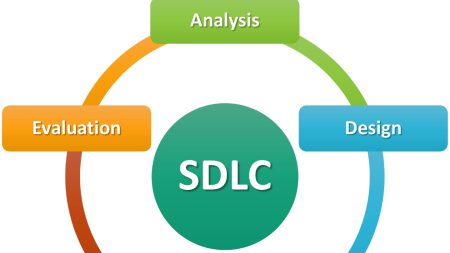- Requirement Gathering and Analysis
- Feasibility Study
- System Design
- Implementation (Coding)
- Testing
- Deployment
- Maintenance and Support
- Conclusion
What Are The Steps Of The Development Process For A Software Project?
What are the steps of the development process for a software project? The development of a software project involves a series of well-defined steps to ensure the creation of high-quality, reliable, and efficient software. These steps form a structured development process, which is crucial for the success of any software project. Let’s explore software development process steps in detail, backed by statistical data to highlight the importance and impact of each phase.
Step 1: Requirement Gathering and Analysis
Requirement gathering and analysis is the first and perhaps the most critical step in the software development process. This phase involves understanding the needs and expectations of the end-users and stakeholders.
Techniques for Gathering Requirements:
- Interviews: Direct conversations with stakeholders to gather detailed information.
- Surveys: Distributing questionnaires to a broader audience to collect diverse requirements.
- Document Analysis: Reviewing existing documentation to extract relevant information.
Clear and well-defined requirements are vital to prevent misunderstandings and ensure that the final product (for example, custom business application) meets the users’ needs. According to a study by the Project Management Institute (PMI), 37% of projects fail due to inaccurate requirements gathering.
Step 2: Feasibility Study
The feasibility study assesses whether the proposed project is viable and worth pursuing. It involves analyzing various aspects such as technical feasibility, economic feasibility, legal feasibility, and operational feasibility.
Types of Feasibility:
- Technical Feasibility: Evaluates if the technology needed for the project is available and capable.
- Economic Feasibility: Assesses the cost-effectiveness of the project.
- Legal Feasibility: Ensures the project complies with legal and regulatory requirements.
- Operational Feasibility: Determines if the organization has the capacity to support the project.
A well-conducted feasibility study can significantly influence the success rate of a project. Statistics show that projects with thorough feasibility studies have a 70% higher success rate.
Step 3: System Design
System design is the process of defining the architecture, components, interfaces, and data for a system to satisfy specified requirements.
High-Level vs. Detailed Design:
- High-Level Design: Provides an overview of the system architecture and components.
- Detailed Design: Focuses on the specifics of each component and their interactions.
Tools and Methodologies:
- UML (Unified Modeling Language): A standardized way to visualize system design.
- Flowcharts: Diagrams that depict the flow of data and control in the system.
In custom programming design plays a crucial role in ensuring the project runs smoothly. Poor design can lead to significant challenges later in the development process. The Standish Group reports that 32% of projects fail due to inadequate or improper system design.
Step 4: Implementation (Coding)
Implementation is where the actual coding of the software takes place. It is crucial to follow coding standards and best practices to ensure the software is maintainable and scalable.
Common Programming Languages:
- JavaScript: Used by 67.7% of developers.
- Python: Gaining popularity with 44.1% of developers using it.
- Java: A staple in enterprise environments with 40.2% usage.
Version Control Systems:
- Git: Used by 87.2% of developers for version control.
- Subversion (SVN): An older system still in use by 16.5% of developers.
Implementation is a critical phase, and it’s common for projects to encounter issues here. According to the 2022 State of DevOps report, 48% of development teams face challenges in the implementation phase, primarily due to poor coding practices.
Step 5: Testing
Software testing is the process of evaluating the software to ensure it meets the required standards and functions correctly. It is essential for identifying and fixing bugs before deployment.
Types of Testing:
- Unit Testing: Testing individual components.
- Integration Testing: Ensuring different components work together.
- System Testing: Testing the entire system as a whole.
- Acceptance Testing: Validating the system with user requirements.
Tools for Testing:
- Selenium: An open-source tool for automating web applications.
- JUnit: A framework for unit testing in Java.
Effective testing can significantly reduce the number of bugs and issues in the final product. A report by Capers Jones & Associates found that 25% of projects fail due to inadequate testing. But, first of all you need to know the difference between vulnerability scanning and penetration testing.
Step 6: Deployment
Deployment is the process of making the software available for use. It requires careful planning to ensure a smooth transition from development to production.
Deployment Strategies:
- Phased Deployment: Gradually releasing the software in phases.
- Big Bang Deployment: Releasing the entire software at once.
- Parallel Deployment: Running the new and old systems simultaneously.
Challenges in deployment can lead to project delays and failures. Research by McKinsey & Company indicates that 17% of IT projects fail during the deployment phase due to inadequate planning and execution.
Step 7: Maintenance and Support
Maintenance involves making necessary updates and improvements to the software post-deployment. It is crucial for ensuring the software remains functional and efficient over time.
Types of Maintenance:
- Corrective Maintenance: Fixing bugs and errors.
- Adaptive Maintenance: Modifying the software to work in a changed environment.
- Perfective Maintenance: Enhancing the software to improve performance.
- Preventive Maintenance: Making changes to prevent future issues.
Maintenance can be costly, often accounting for up to 60% of the total project cost, as per a study by the IEEE.
Summing Up
So, what are the steps of the development process for a software project? Each step of the software development process plays a vital role in ensuring the overall success of a project. From gathering accurate requirements to thorough testing and ongoing maintenance, each phase contributes to the creation of reliable and efficient software. Understanding and adhering to these steps can significantly enhance the likelihood of project success in the ever-evolving field of software development.











